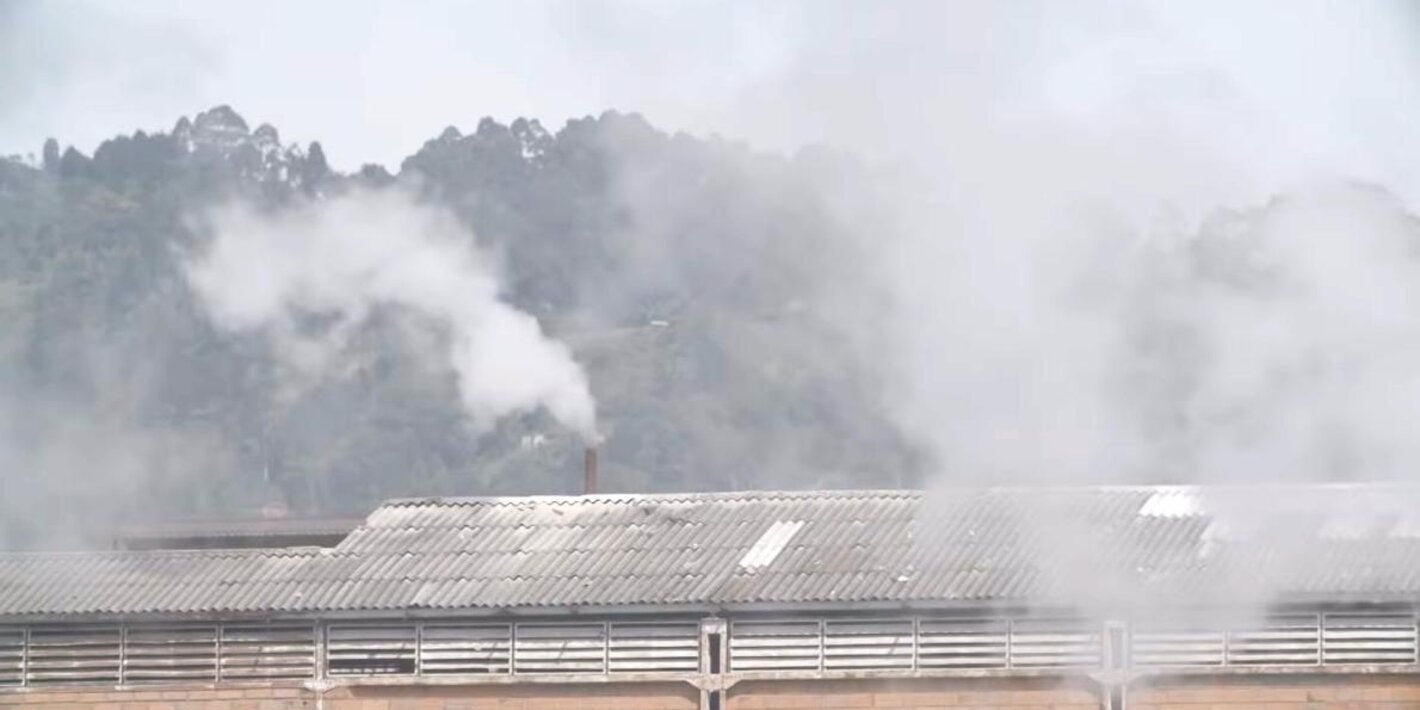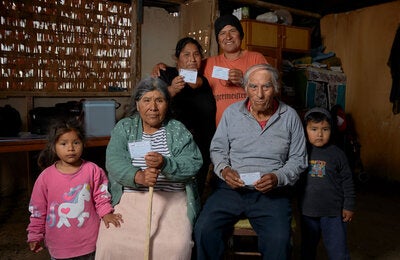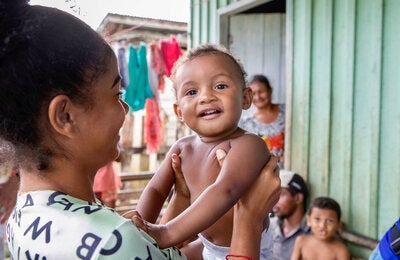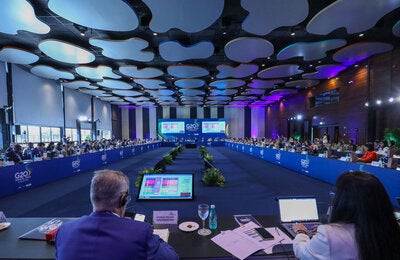
Geneva, 29 October 2018 – Every day around 93% of the world’s children under the age of 15 years (1.8 billion children) breathe air that is so polluted it puts their health and development at serious risk. Tragically, many of them die: The World Health Organization (WHO) estimates that in 2016, 600,000 children died from acute lower respiratory infections caused by polluted air.
“Polluted air is poisoning millions of children and ruining their lives. This is inexcusable. Every child should be able to breathe clean air so they can grow and fulfil their full potential.”
A new WHO report on Air pollution and child health: Prescribing clean air examines the heavy toll of both ambient (outside) and household air pollution on the health of the world’s children, particularly in low- and middle-income countries. The report is being launched on the eve of WHO’s first ever Global Conference on Air Pollution and Health.
It reveals that when pregnant women are exposed to polluted air, they are more likely to give birth prematurely, and have small, low birth-weight children. Air pollution also impacts neurodevelopment and cognitive ability and can trigger asthma, and childhood cancer. Children who have been exposed to high levels of air pollution may be at greater risk for chronic diseases such as cardiovascular disease later in life.
“Polluted air is poisoning millions of children and ruining their lives,” says Dr Tedros Adhanom Ghebreyesus, WHO Director-General. “This is inexcusable. Every child should be able to breathe clean air so they can grow and fulfil their full potential.”
One reason why children are particularly vulnerable to the effects of air pollution is that they breathe more rapidly than adults and so absorb more pollutants.
“Air Pollution is stunting our children’s brains, affecting their health in more ways than we suspected. But there are many straightforward ways to reduce emissions of dangerous pollutants."
They also live closer to the ground, where some pollutants reach peak concentrations – at a time when their brains and bodies are still developing.
Newborns and young children are also more susceptible to household air pollution in homes that regularly use polluting fuels and technologies for cooking, heating and lighting
“Air Pollution is stunting our children’s brains, affecting their health in more ways than we suspected. But there are many straightforward ways to reduce emissions of dangerous pollutants ,” says Dr Maria Neira, Director, Department of Public Health, Environmental and Social Determinants of Health at WHO.
“WHO is supporting implementation of health-wise policy measures like accelerating the switch to clean cooking and heating fuels and technologies, promoting the use of cleaner transport, energy-efficient housing and urban planning. We are preparing the ground for low emission power generation, cleaner, safer industrial technologies and better municipal waste management, ” she added.
Key findings:
- Air pollution is damaging children’s lung function, even at lower levels of exposures
- Globally, 93% of the world’s children under 15 years of age are exposed to ambient fine particulate matter (PM2.5) levels above WHO air quality guidelines, which include the 630 million of children under 5 years of age, and 1.8 billion of children under 15 years
- In low- and middle-income countries around the world, 98% of all children under 5 are exposed to PM2.5 levels above WHO air quality guidelines. In comparison, in high-income countries, 52% of children under 5 are exposed to levels above WHO air quality guidelines.
- More than 40% of the world’s population – which includes for 1 billion children under 15 - is exposed to high levels of household air pollution from mainly cooking with polluting technologies and fuels.
- About 600,000 deaths in children under 15 years of age were attributed to the joint effects of ambient and household air pollution in 2016. Together, household air pollution from cooking and ambient (outside) air pollution cause more than 50% of acute lower respiratory infections in children under 5 years of age in low- and middle-income countries.
- Air pollution is one of the leading threats to child health, accounting for almost 1 in 10 deaths in children under five years of age.
WHO’s First Global Conference on Air Pollution and Health, which opens in Geneva on Tuesday 30 October will provide the opportunity for world leaders; ministers of health, energy, and environment; mayors; heads of intergovernmental organizations; scientists and others to commit to act against this serious health threat, which shortens the lives of around 7 million people each year. Actions should include:
- Action by the health sector to inform, educate, provide resources to health professionals, and engage in inter-sectoral policy making.
- Implementation of policies to reduce air pollution: All countries should work towards meeting WHO global air quality guidelines to enhance the health and safety of children. To achieve this, governments should adopt such measures as reducing the overdependence on fossil fuels in the global energy mix, investing in improvements in energy efficiency and facilitating the uptake of renewable energy sources. Better waste management can reduce the amount of waste that is burned within communities and thereby reducing ‘community air pollution’. The exclusive use of clean technologies and fuels for household cooking, heating and lighting activities can drastically improve the air quality within homes and in the surrounding community.
- Steps to minimize children’s exposure to polluted air: Schools and playgrounds should be located away from major sources of air pollution like busy roads, factories and power plants.
Links
— Air pollution and child health: Prescribing clean air
— BreatheLife air pollution campaign (BreatheLife is a partnership of WHO, UN Environment and the Climate and Clean Air Coalition to Reduce Short-lived Climate Pollutants that aims to increase awareness and action on air pollution by governments and individuals.)
For more information, please contact:
Nada Osseiran
WHO Department of Public Health, Environmental and Social Determinants of Health
Telephone: +41 22 791 4475
Mobile: +41 79 445 1624
Email: osseirann@who.int
Gregory HÄRTL
Coordinator, News, Social Media and Monitoring
Telephone: +41 22 791 4458
Mobile: +41 79 203 6715
Email: hartlg@who.int
Fadéla Chaib
Communications Officer
Telephone: +41 22 791 3228
Mobile: +41 794 755 556
Email: chaibf@who.int



